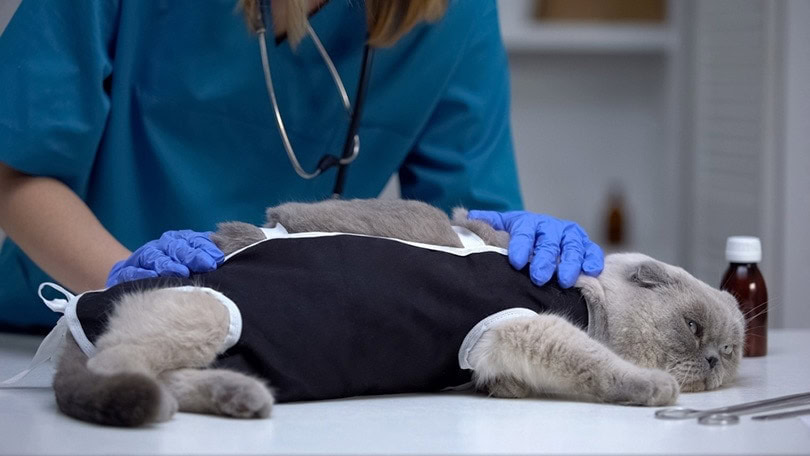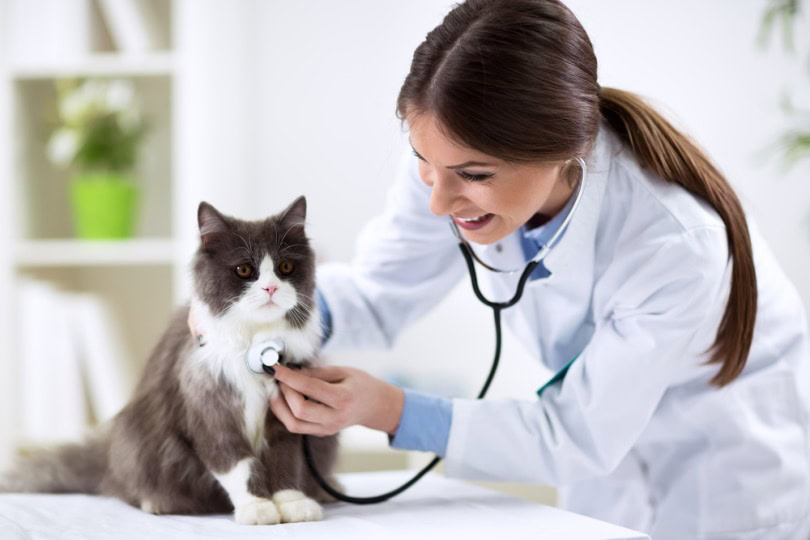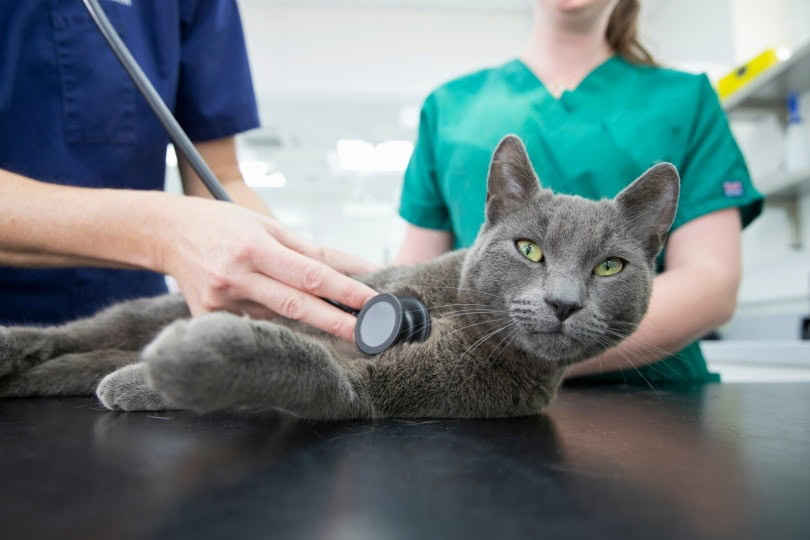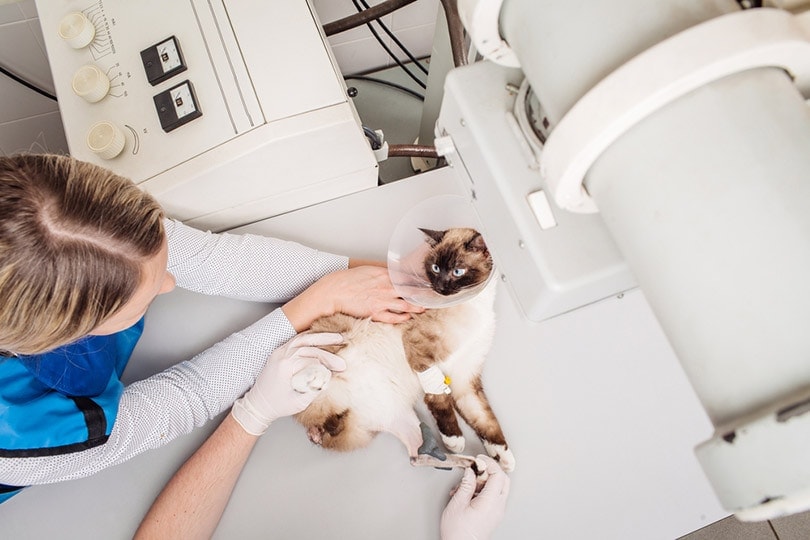Click to Skip Ahead
We all know that part of responsible cat ownership is getting our pet spayed or neutered when necessary. Spaying and neutering prevent pregnancies and have numerous health benefits for our feline pals. But how much is it to spay or neuter a cat these days? Well, it varies and depends on specific variables, such as your location. Today, we’ll look at the average costs of getting your cat spayed or neutered so you have a better idea of what you’re in for when the time comes.
 The Importance of Spaying or Neutering
The Importance of Spaying or Neutering
You might think the only reason to have your cat spayed or neutered is to prevent unwanted pregnancy, but there are quite a few reasons to have the procedure. Having your pet spayed or neutered can lengthen their lifespan! One study showed that spayed cats lived up to 39% longer, while neutered cats lived up to 62% longer, which is quite an increase.
That’s not all, though! Spaying or neutering your cat can also keep them from engaging in destructive behaviors. Some behaviors that can be negated or reduced by spaying or neutering include roaming while in heat, other heat-related behaviors (yowling, etc.), and aggressiveness.
Spaying or neutering your pet can also help them stay healthier, reducing the risk (or even preventing) some illnesses. In males, neutering can eliminate issues relating to the prostate and lessen the chances of testicular cancer, while in females, spaying can eliminate breast tumors and uterine infections.

How Much Does Spaying or Neutering Cost?
The cost of the procedure depends on how old your cat is, where you take them to be fixed, and where you’re located in the United States. For example, having a cat that’s 6 months old or younger fixed will be less expensive than if you’re having the procedure done on an older cat (older cats often require more anesthesia and come with a few more risks). Likewise, having your cat spayed or neutered in the Midwest or the Southern parts of the U.S. is less expensive than having it done on the East or West Coast.
The most expensive option is to take your cat to a regular veterinarian. The national average for spaying is $300–$500, and neutering is roughly $200. However, there are less expensive options. Mobile clinics, for example, travel from place-to-place offering vet services. They provide quick and efficient service for an average cost of $60–$80 for spaying and $40–$60 for neutering (these appointments tend to fill up quicker).
You can also spay or neuter your pet through a shelter or rescue organization. They are among the cheapest options, as they provide services at lower costs for those needing financial assistance. Average prices for spaying can range from $50–$150 and $35–$100 for neutering.
If you’re looking for less expensive spaying and neutering options, we recommend referencing the ASPCA’s list of low-cost programs. Finally, whether you’re having your cat spayed or neutered will also affect the cost. Spaying is a more intensive surgery than neutering and, therefore, costs more. Spaying also takes longer than neutering, which increases the price.
Additional Costs to Anticipate
Luckily, there shouldn’t be too many additional costs to having your cat spayed or neutered. In some cases, you may pay more for bloodwork or extra anesthesia. You might also need to catch your pet up on vaccines, which will add to the total cost. However, you shouldn’t expect additional fees other than the price of pain medication after surgery.


Are There Risks Associated with Spaying or Neutering?
There are always a few risks when surgery is involved, but this is one of those cases where the benefits outweigh the risks. The risks are also very low for young, healthy kittens (though kittens are more at risk for after-surgery complications that arise from being too active before their bodies are ready). Some of these complications include bleeding or inflammation along the incision, an infection at the incision, the incision being reopened, and swelling beneath the skin where the incision is. In rarer cases, female cats might develop urinary incontinence or bladder infections.
Also, a cat being spayed or neutered increases their chances of becoming obese, as the surgery decreases their metabolism. Obesity is a big problem in felines and can lead to a host of health issues, including diabetes and heart issues. Keeping your cat on a diet of cat food that meets their nutritional needs but isn’t high in calories can help, as can helping the cat stay active.
Does Pet Insurance Cover Spaying or Neutering?
Unfortunately, most pet insurance plans don’t cover the cost of spaying or neutering your cat because they consider it an elective surgery. However, you can check if your pet insurance company has add-ons to your plan to cover preventative care. If they do, check the add-ons to see what they cover, as occasionally, they’ll cover costs associated with spaying or neutering.

How to Help Your Cat After a Spay or Neuter
Just like you would need a bit of TLC after surgery, your favorite feline friend will also need it. This primarily involves keeping an eye on them over the next few days to ensure the cat is healing as they should. You’ll also want to ensure there’s no excessive lethargy, food avoidance, or swollen bellies; these signs indicate you need to talk with your vet. And if your pet hasn’t urinated by the 24-hour mark after surgery, you need to get to the vet as soon as possible.
Along with watching for physical signs, you’ll also need to do some cat wrangling to ensure your kitty isn’t making death-defying leaps off tall objects or running up the walls. Also, keep an eye on whether your pet is licking at the incision site; doing this could lead to bleeding and irritation.
Besides that, it’s just a matter of giving your cat pain medication if needed and lots of attention and affection!
 Conclusion
Conclusion
Having your feline spayed or neutered is a necessary part of cat ownership, but it can be a significant expense if you aren’t careful. While the cost depends on a handful of variables, such as your geographical location, going to a vet is the most expensive option. Luckily, there are low-cost options for spaying and neutering available in the form of mobile clinics, shelters, and rescues. If you need financial assistance in getting your pet fixed, check out these lower-cost options, as you should find something available to fit your budget!
See also:
- How to Prepare a Cat for Surgery (Vet Answer)
- What Happens if You Neuter a Cat Too Early? Vet Reviewed Facts & FAQ
Featured Image Credit: PRESSLAB, Shutterstock











